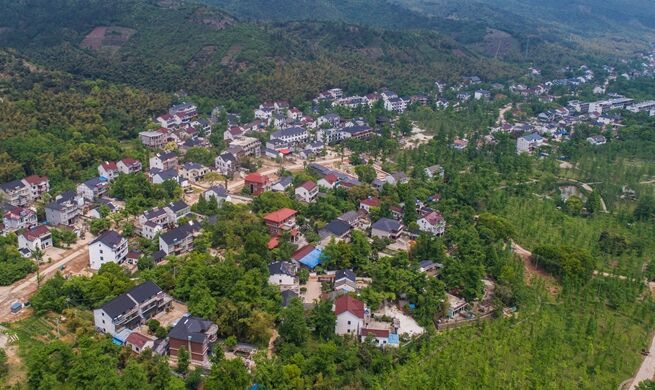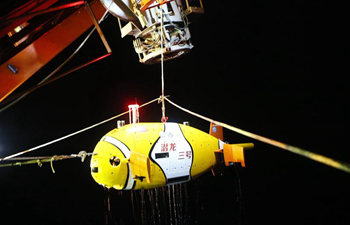HARBIN, April 24 (Xinhua) -- The relay satellite for the Chang'e-4 lunar probe expected to land on the far side of the Moon later this year, has been named "Queqiao" -- magpie bridge.
The name was announced by the China National Space Administration (CNSA)Tuesday, China's Space Day.
In a Chinese folktale, magpies form a bridge with their wings on the seventh night of the seventh month of the lunar calendar to enable Zhi Nu, the seventh daughter of the Goddess of Heaven, to cross and meet her beloved husband, separated from her by the Milky Way.
Together with the relay satellite, two microsatellites developed by the Harbin Institute of Technology, "Longjiang-1" and "Longjiang-2," will also be sent into orbit.
Work on Chang'e-4 is progressing well, said Li Guoping, a spokesman for CNSA.
Chang'e-4 will carry payloads for Germany, the Netherlands, Saudi Arabia and Sweden.
The far side of the Moon is of great scientific interest but landing there requires a relay satellite to transmit signals.
One of China's planned 36 launches this year, the relay satellite will be sent into the halo orbit of the Earth-Moon Lagrange Point L2 in late May, and the Chang'e-4 lunar lander and rover will be sent to the Aitken Basin of the south pole region of the Moon about six months later.
"We designed an orbit at the Earth-Moon Lagrange Point L2 about 450,000 kilometers from the Earth, where a gravitational equilibrium can be maintained, and the relay satellite will be able to 'see' both the Earth and the far side of the Moon," said Bao Weimin, director of the Science and Technology Commission of the China Aerospace Science and Technology Corporation.
The Aitken Basin is an ancient lunar region containing lots of primeval information, and as the far side of the Moon is shielded from electromagnetic interference from the Earth, it is an ideal place to study the space environment. The probe can "listen" to the deeper reaches of the cosmos, said Bao.
The relay satellite will be carried by Long March-4 rocket. The relay satellite and rocket are both at the launch center in Xichang, southwest China's Sichuan Province.
"The whole mission is very complex and challenging. We feel great pressure, but we are confident," Bao said.

















